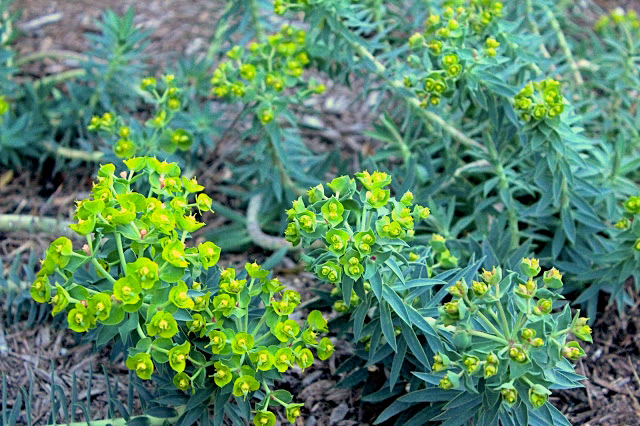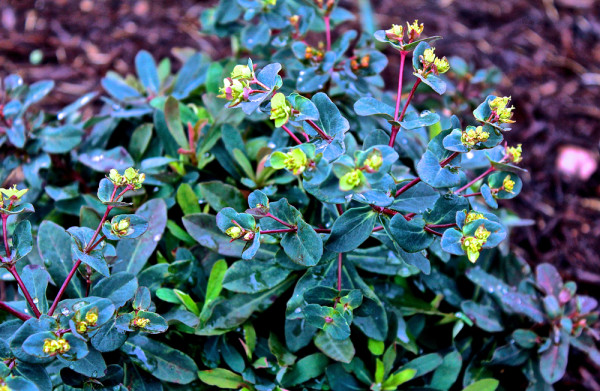

In Central Texas, rain brings gardeners out into the streets to dance. And dance I did, last week.
But I know that the drought isn’t over and the sun will return to beat upon our backs. Most summers, we live in a clay, cracked-earth and sometimes scorching environment. Not the best conditions for gardening.
So, I am always on the lookout for another plant that will thrive here. At the moment, I am taken with several species of Euphorbia and am trialing several of them in my garden.
The genus Euphorbia contains more than 2,000 very diverse species of plants. They grow around the globe in warmer climates; some of the succulent species are very similar to cacti and can handle the heat and drought challenges of Central Texas gardens.
Euphorbia rigida has emerged as my favorite thus far. Popular in many hill country gardens, this perennial plant, also known as ‘gopher plant’ or ‘silver spurge,’ is drought-hardy plant and will survive even the toughest conditions. Native to the Mediterranean basin, it thrives in full sun and has low water needs. It likes drainage but will do fine in rocky soils as well.
Growing 2-3 feet wide and 1-2 feet tall, gopher plant is evergreen and produces bright chartreuse blooms with red bracts in early spring. The pretty, long-lasting little blooms seem to pop out all over this semi-spiky grey plant. It’s Mother Nature’s answer to neon in the landscape palette.
If you have a large space to fill, it will seed out and spread but is also easily controlled. They begin growing upright and then bow down to the ground in a delicate mounding form. With their sculptural shape, these Euphorbias look nice paired with contrasting soft native plants like salvias or grasses.
Happy in a rocky, hill country wild environment, it also has the added bonus of being deer-proof. That’s because it contains a milky sap that can be caustic and irritating to both the skin and eyes. Be sure to wear rubber garden gloves when pruning or handling them. But it’s worth the extra caution if it keeps those pesky deer away.
These leafy Euphorbias are often called “spurges,” because their common name is derived from the Latin word expurgare, which means “to purge.” The sap of some of these plants has traditionally been used as a purgative, or laxative.

Some of the other Euphorbias growing my garden include Euphorbia ‘Ascot Rainbow’ and Euphorbia amygdaloides.
Ascot rainbow has dramatic variegated foliage – grey leaves with a bright yellow edge. And it can take our heat and full sun. Its growth habit is more upright and the leaves are not as close together as those of the gopher plant, though the blooms are almost identical. It is slightly smaller than that of the gopher.
My Euphorbia amygdaloides didn’t fare as well this summer. Its struggles were caused by operator error, however. Filling several empty spaces in a bed, these plants were supposed to live in the shade of another new, but larger plant that didn’t make it. Because this species is shade loving, it choked when left out in the open with full sun. It will be moving sometime next week to a friendlier location with dry shade. Its leaves darker green and the stems are a striking deep red. This variety can spread quickly, so give it room or be prepared to prune periodically.
With more than 2,000 species, there are many more that can do well in Central Texas, including smaller plants suitable for pots.
Some of the other, more well-known Euphorbias include poinsettias, crown of thorns and pencil cactus.
So, if you’re looking for a xeric, drought-tolerant and deer-proof plant that will bring you hours of enjoyment in your landscape, give one of these a try.
Local Landscape Designer and Garden Coach Diana Kirby provides landscaping tips at http:/www.dianasdesignsaustin.com and writes a garden blog at https://www.dianasdesignsaustin.com

